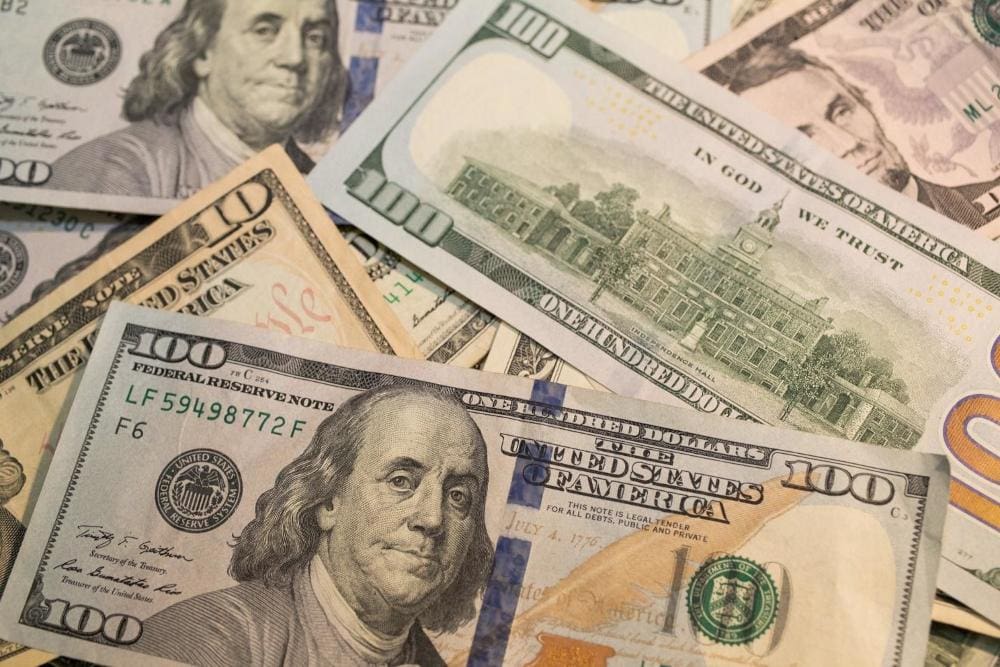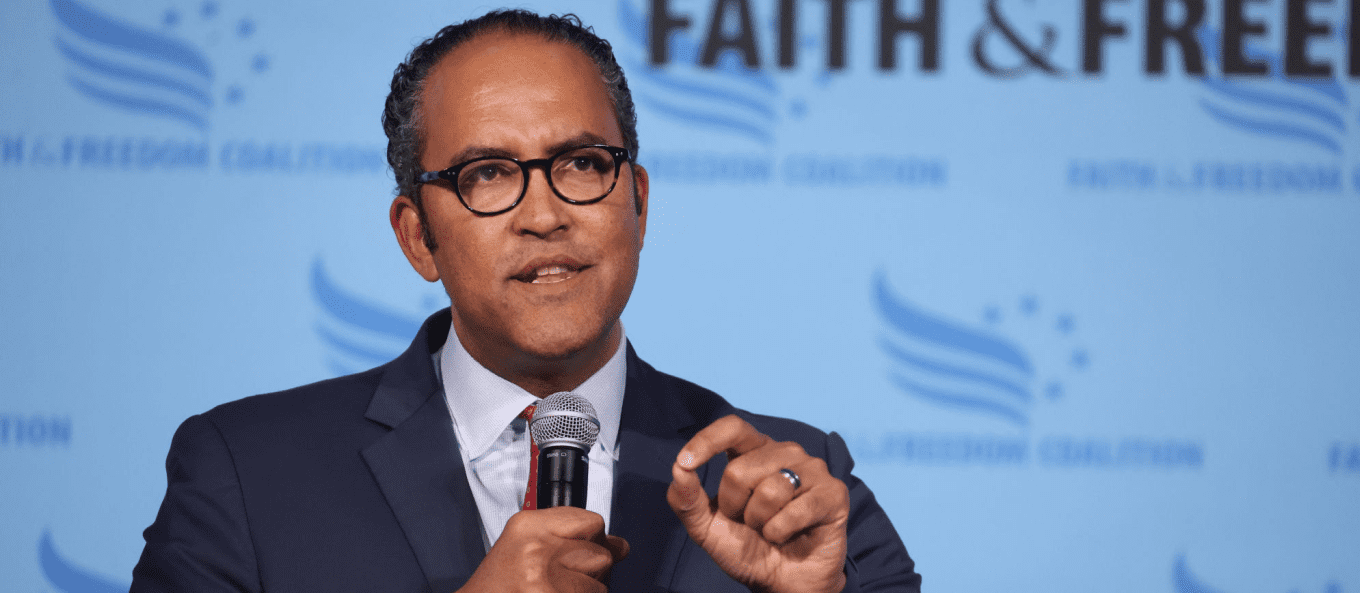9 min read
If the debt ceiling issue isn’t resolved before the end of the year, it will be significantly harder to solve it if it’s punted into 2023. We cannot spend more money than we take in nor make interest payments forever without paying down our national debt. Fiscal responsibility is a precondition for a strong economy, and continuing on this path is a national security risk.
However, instead of solving this problem, a debt ceiling debate in the new Congress would likely lead to the U.S. Government defaulting on its debt and having our credit rating downgraded. The resulting financial crisis would be significant, and it’s 100% avoidable.
The Impact of Extremists on The Debt Ceiling
Extremists always think they have the advantage when a situation is tense. This is the environment in which the House of Representatives will find itself when Republicans take over the House with a slim majority.
When the new members of Congress are seated on January 3, 2023, the extremists of the far right will try to exert pressure on Republican leadership, because their votes will be needed more than ever to pass any legislation. However, before we get to watching these power dynamics unfold in the new year, we have a lame-duck session in Congress to get through.
President Biden thought the lame-duck would be easy. He thought he would prevent a shutdown by passing a government spending bill for the rest of this fiscal year and the debt ceiling would be raised as well, avoiding a potential self-inflicted global financial crisis. However, the far left is flexing their muscle with current Democrat House leadership by withholding support to suspend the debt ceiling. These extremists want to lock in more spending on their priorities, since they know they won’t have a sympathetic ear in the next Congress.
Finding an agreement on dealing with the debt ceiling is hard, but if we learned anything from the unexpected results of the 2022 elections, it’s that Americans want serious people to solve serious problems. To understand the debate around the debt ceiling we must first understand how the government funds itself and how this process contributes to the national debt.
How does the Government Fund Itself?
The United States government funds its operations through three sources: taxes, borrowing, and printing money.
- Taxes are revenues collected from individuals and businesses based on their income, consumption, assets, or activities.
- Borrowing is when the government issues Treasury securities, such as Treasury bonds, notes, and bills, to investors who lend money to the government in exchange for interest payments and principal repayment.
- Printing money is when the Federal Reserve, the central bank of the US, creates new money by buying government debt or other assets, or by adjusting the interest rate it charges to banks.
The federal deficit is the difference between how much the federal government spent and how much it received in revenues in a given fiscal year. A deficit occurs when the government spends more than it collects, which means it must borrow to cover the gap.
Types of Federal Spending

There are three types of federal spending: mandatory, discretionary, and interest payments on the national debt.
- Mandatory spending refers to spending that is required by law – the government does not have a choice about whether or not to fund it. For example, entitlement programs like Social Security, Medicare, and Medicaid are all mandatory spending items.
- Discretionary spending, on the other hand, refers to items that the government can choose whether or not to fund every year. Examples of discretionary spending include military expenditures, education, transportation, and foreign aid.
- Interest on Federal Debt is the interest payments the government makes on its accumulated debt, minus interest income received by the government for assets it owns.
The appropriations and budget process is the way that Congress decides how to allocate the government’s discretionary spending. The government is more likely to run a deficit than not, and have to borrow money despite which party is in power. The government has run a deficit for 77 of the past 90 years.
What is the National Debt?
The national debt is the accumulation of past deficits and surpluses. The national debt is the total amount of money that the government owes to its creditors, both domestic and foreign. It has implications for the government’s fiscal sustainability, its creditworthiness, its borrowing costs, and its influence on the global economy.

The U.S. has carried debt since its inception. Debts incurred during the American Revolution amounted to $75 million, primarily borrowed from domestic investors and the French Government. As of mid-November 2022, according to the Government Accountability Office (GAO) the U.S. national debt is $31.3 Trillion.
How Much Money is $31.3 Trillion?


A single stack of one million dollars’ worth of $100 bills would stand 43 inches high, or a little less than 4 feet. One billion dollars in $100 bills would stack 3,583 feet high or almost 3/4th of a mile. One trillion dollars in $100 bills would be 679 miles high. The current $31 trillion U.S. National debt would be over 21,000 miles high, almost the circumference of the Earth.
What Is the Debt Ceiling and Extraordinary Measures?
The debt ceiling is the maximum amount of money that the United States government is allowed to borrow to finance its operations. Unfortunately, having a debt ceiling has failed to constrain government spending. Congress set the statutory debt limit in 1917, and it has been raised or suspended 78 times since 1960. If this debt ceiling is reached and is not raised, the government will default on its debt, which could have catastrophic consequences for the economy.
When the statutory debt limit is reached the Treasury Department can take what are known as “extraordinary measures” to prevent the U.S. Government from defaulting on its debt. Extraordinary measures allow the Treasury Secretary to continue borrowing money even though the debt ceiling has not been raised, they are limited in scope and are designed to give Congress time to debate the appropriate measures to take to avoid a crisis.
However, once these extraordinary measures are exhausted the only option to prevent a default is for Congress to increase the debt ceiling to give the Treasury Department the authority to keep borrowing money. When Congress expresses an unwillingness to raise the debt ceiling, threatening a potential default on the government’s debt is what leads us into a debt ceiling crisis.
The debt ceiling crisis of 2011 led to a partial shutdown of the government and a downgrade in the credit rating of the United States. The crisis was finally resolved when Congress raised the debt limit and cut federal expenditures by $2.1 trillion over ten years.
What Happens If the Debt Ceiling Isn’t Increased?
While some people argue that the importance of debt ceiling has diminished since Congress has consistently raised it over the years, others claim that the ceiling still functions as a necessary check on government spending. If Congress, the Treasury Secretary and the White House fail to agree on a new debt limit by the time it’s reached, then the federal government would default on its debt, undermining the confidence and stability of the global financial system.
Instability in Markets
Financial markets would react with panic and volatility wiping out a significant amount of wealth and retirement savings. The U.S dollar, which is the world’s reserve currency, would depreciate sharply, leading to higher inflation and interest rates. The U.S Treasury bonds, which are considered the safest and most liquid assets in the world, would lose value and credibility, causing a spike in borrowing costs for the U.S government, businesses, and consumers. The stock market would plunge. The credit rating of the U.S would be downgraded, signaling a loss of trust and credibility in the U.S fiscal and political institutions.
Uncertainty for Individuals
Individual savings and investments would suffer significant losses and uncertainty, as the value of their assets and income would decline. Savers would face lower returns and higher inflation, eroding their purchasing power and savings. Those who rely on government benefits, such as Social Security, Medicare, and veterans’ pensions, would face the possibility of delayed or reduced payments, affecting their livelihood and well-being. Those who owe debts, such as mortgages, student loans, and credit cards, would face higher interest rates and penalties, making it harder to repay their obligations.
The U.S debt ceiling crisis is a serious and urgent threat to the U.S and the global economy, as well as to individual savings and investments. It is imperative that Congress and the White House reach a bipartisan agreement and deal with this issue once and for all.
What Congress should do?
Policy leaders and experts from all political backgrounds have suggested various comprehensive plans to reduce America’s long-term debt while promoting future economic growth. However, there are no simple solutions and delaying action will only exacerbate the problem.
Although lawmakers may claim they want to tackle this challenge by reforming the tax code and major programs like Social Security, their behavior during the election campaigns suggests otherwise.
Although lawmakers may claim they want to tackle this challenge by reforming the tax code and major programs like Social Security, their behavior during the election campaigns suggests otherwise. The fear of political attacks from the left and the right make it clear why Congress is hesitant to simplify the tax code or modify entitlement programs like Medicare and Medicaid to ensure their sustainability. Any proposed changes give opponents an easy target. This reluctance demonstrates how far from reaching the “grand bargain” lawmakers really are.
Congress needs to avoid a government shutdown and deal with the debt ceiling with legislation that includes the following three items.
Align the Debt Limit with Budget and Appropriations Decisions
The debate about the U.S debt ceiling is NOT a discussion about federal spending. It’s about how much the U.S. Government can borrow to pay for what it has ALREADY obligated to spend. The time to have the discussion about how much debt the U.S. Government must take on to fund its operations is when Congress is debating its funding priorities, not months after these decisions have been made. Just like you and I don’t have the luxury to buy something today and worry about how we are going to pay for it months down the road, the federal government should have to behave the same way.
Move to a Two-Year Appropriations Cycle
Instead of passing appropriations bills that only cover one year of operations, Congress should start passing two-year appropriations. This would reduce the frequency and severity of budget uncertainty, delays, and disruptions. This could improve the planning, execution, and oversight of federal programs and policies, as well as foster greater accountability and transparency.
This would also free up more time and resources to enhance the quality and effectiveness of congressional oversight and improve the alignment of federal resources with national goals and needs. It could also encourage more meaningful and bipartisan dialogue and compromise on budget issues, as well as reduce the opportunities for partisan brinkmanship and gridlock.
This would provide more stability and predictability for federal agencies, state and local governments, contractors, grantees, and beneficiaries of federal programs and services, as well as for the economy and the public. This could improve the efficiency, innovation, and responsiveness of federal operations and service delivery, as well as the coordination and collaboration among federal and non-federal partners.
Get to a Debt-to-GDP Ratio of 60% First
Debt-to-GDP matters because it is a common indicator of a country’s fiscal sustainability, solvency, and borrowing capacity. It measures the ratio of a country’s public debt to its gross domestic product (GDP), which is the total value of goods and services produced in a year. A higher debt-to-GDP ratio implies that a country has a larger debt burden relative to its economic output and income, and may face more challenges in servicing its debt, financing its public spending, and attracting investors and creditors.
A high debt-to-GDP ratio means that a country must spend a larger share of its income on repaying its debt, which can limit its ability to invest in public goods and services, stimulate growth, and cope with shocks. A low debt-to-GDP ratio means that a country has more fiscal flexibility and confidence to manage its debt and pursue its policy objectives.
As of June 2022, the debt-to-GDP ratio for the United States was 125%. Debt-to-GDP is not the only factor that determines a country’s fiscal position and performance, and it can change over time, but it is an important indicator of financial strength:
- Many financial studies suggest that 90% is a potential tipping point for negative effects of debt on growth and stability.
- The European Union’s Stability and Growth Pact sets 60% as the limit for its member states to maintain sound public finances.
- The International Monetary Fund (IMF) sets a range of 30% to 80% as a prudent and sustainable level of debt for most emerging market and developing economies.
To get to a point where the U.S. government can have a balanced, responsible federal budget an interim step to achieve this goal should be to get our debt-to-GDP to 60%.
Bottom-line
If we want to ensure the rest of this century stays the American Century, then we need to get our financial house in order. We can’t prepare for a future with adversaries whose populations and economies are going to be larger than ours, or ensure we continue to improve the quality of life for all Americans if we aren’t operating from a financial position of strength.
First time reading? If you want rational takes on foreign policy, politics and technology then sign up below for “The Brief.” It’s a twice a month email on things that aren’t being discussed but should – all in 5 minutes or less.






























